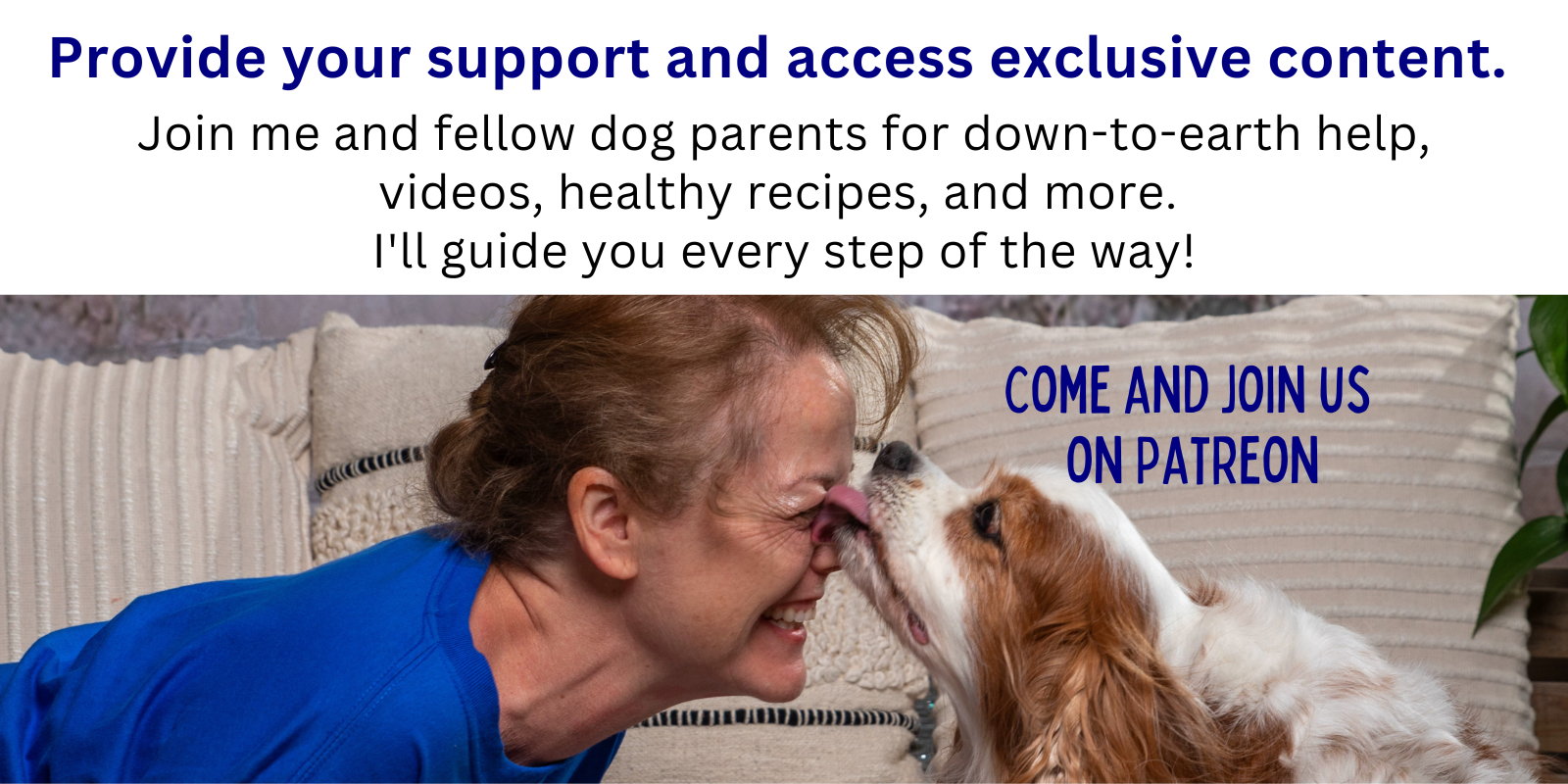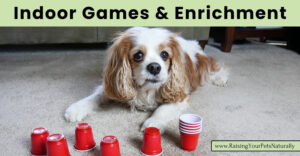Google Adsense Below


I’m a treat trainer, for sure. Dogs need to eat, and I like rewarding dogs often for good behavior and learning. But, sometimes, a dog is so food and treat motivated, they can’t think of anything else. Some dogs can barely contain their excitement the moment they see a treat bag, you reach for a treat in your pocket, or go to the room you do most of your dog training in. These dogs may start to bark, jump, spin, and just seem like they are out of their minds. In a sense, they are. They can’t think straight. Today, I’m going to share some tips on how to continue to use food and rewards in training these dogs, but still work on teaching them to be calm around food.
Have Patience and Take it Slow
Building calm behavior in a food-driven dog is about teaching a new habit for both you and your dog! I know, it can be really frustrating to try to train your dog during these times, but know that it can happen and you can teach your dog patience, but you need to have 10x more patience than they do at this time. Dog training never happens overnight, and this behavior is definitely something that will take time and may be a bit of a life-long process for your dog, depending on their history and personality. Working on the following exercises daily, will be key to quicker learning. Dogs learn best when we are consistent and when we have clear goals on what we want.
Start with Low-to-Medium Value Rewards
Not all treats are created equal, and when you’re working with a highly food-driven dog, using lower-value treats can help tone down their excitement. For example, save those high-value treats (like meat) for difficult training tasks, and use low-to-medium value treats during calmness training. The goal is to make the treat a reward, but not so exciting they are doing flip-flops for it. And, yes, some dogs see any kind of food as flip-flop worthy.
Keep Treats in Random Locations and in Your Pocket
Keep small treats stashed in a few spots around your home. Throughout the day, reward calm behaviors your dog offers on their own like sitting, resting quietly, or playing calmly. This way, your dog starts to understand that good things come when they are calm and collected, not just when they perform a dog-training behavior.
I also like to keep dry treats in my pocket. This way, I can again reward those good behaviors, and my dog will learn that treats-in-my-pocket is a normal part of life. It’s not a part of “training” to get all excited about.
Teaching “Leave It” Around Food
Learn how and don’t forget to subscribe to @RaisingYourPetsNaturally for more.
Leave it is a great behavior for teaching impulse control. Start by holding a treat in your closed hand. Wait for your dog to remain calm—no jumping, barking, or grabbing—and, once they do, calmly give them the treat. However, if you go to hand them the treat and they get all whipped up again, close your hand, wait for the calm again. Once calm, deliver. This approach teaches your dog that the treat isn’t a reward for excitement but for calmness.
Practicing Calmness Around Food Daily
Watch a VERY food motivated dog learn how and don’t forget to subscribe to @CavalierTipsandFun for more!
Holding food in front of a food-driven dog can be challenging, but it’s essential to practice calmness around food each day. Start by holding a bowl of food, bag of treats, or a treat bag, and wait for your dog to offer calm behavior, like four paws on the floor or a relaxed sit. Don’t say anything; just wait. If your dog stays calm, reward them. If they get too excited, simply pause until they relax again. Over time, this daily exercise will help your dog stay collected around food.
Teach a Calm “Watch” Behavior
Learn how to teach the watch cue.
“Watch” is a valuable cue to help your dog focus on you rather than the treat. Instead of teaching watch with a food lure, make a subtle clicking sound, when your dog glances up and makes eye contact, use a marker word like “yes” and give them the treat. Still, giving the treat in a calm manner as above. As your dog starts to catch on, add duration before yessing and treating. So, you make a clicking noise, they look up, you say goooood boy, yes, and treat. Repeat, adding a longer duration. Goooood boy, you are so handsome, treat.
Begin Each Training Session with Calm Focus Exercises
When you start a new training session that isn’t a calming exercise, start with one of your calming exercises first. Maybe leaving the treat bag, a few watches, etc. This helps set a relaxed, focused tone for the session and reminds your dog to stay calm and attentive. When your dog is calm, start the new training session. Keep your new training sessions short, calm, slow, and mix in calming exercises between new exercises.
Model the Patience You Want Your Dog to Learn
If we want a patient dog, we need to be a patient trainer. Dogs pick up on our energy, so remember to stay calm, move slowly, and be deliberate. Think “turtle”: quiet, slow, and steady. If you’re patient and gentle in your approach, your dog will learn to adopt the same calmness over time.
Wrap-Up
Training a dog who goes crazy around food takes time and a whole lot of patience. As mentioned earlier, some dogs will need to continue to practice impulse control games around food. By sticking with these steps, you’ll see your dog’s impulse control improve, making training easier and more enjoyable for both of you. Just remember, every bit of progress counts, so take it one small step at a time. Stay patient and consistent, and you and your dog will get there!
Is your dog crazy for training? Share your experiences and tips in the comments below!
Are you looking for even more ways to stay up to date with Raising Your Pets Naturally? Sign up for the newsletter for more tips and promotions. Don’t forget to be social and Like, Follow and Subscribe.
Facebook Twitter Pinterest Instagram YouTube
 |
Dog training tracker & log book |

Google Adsense—>




